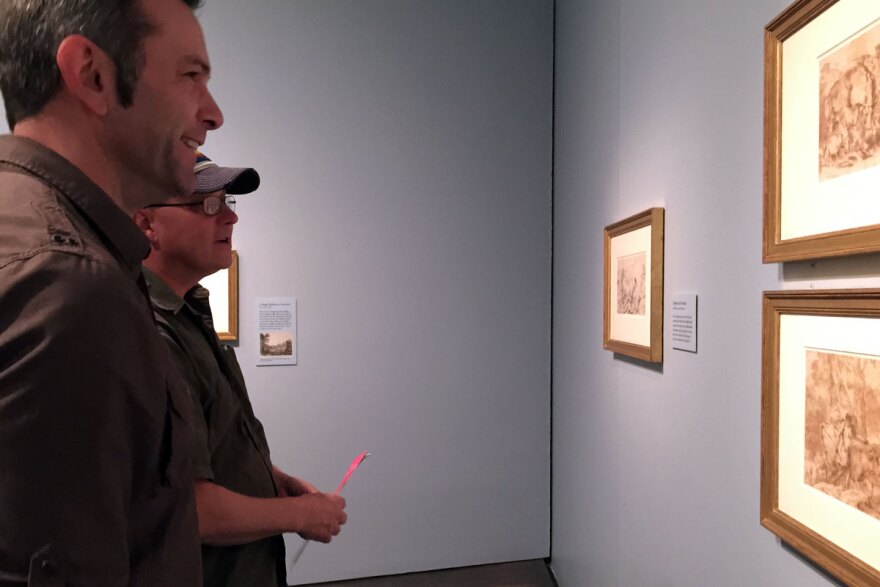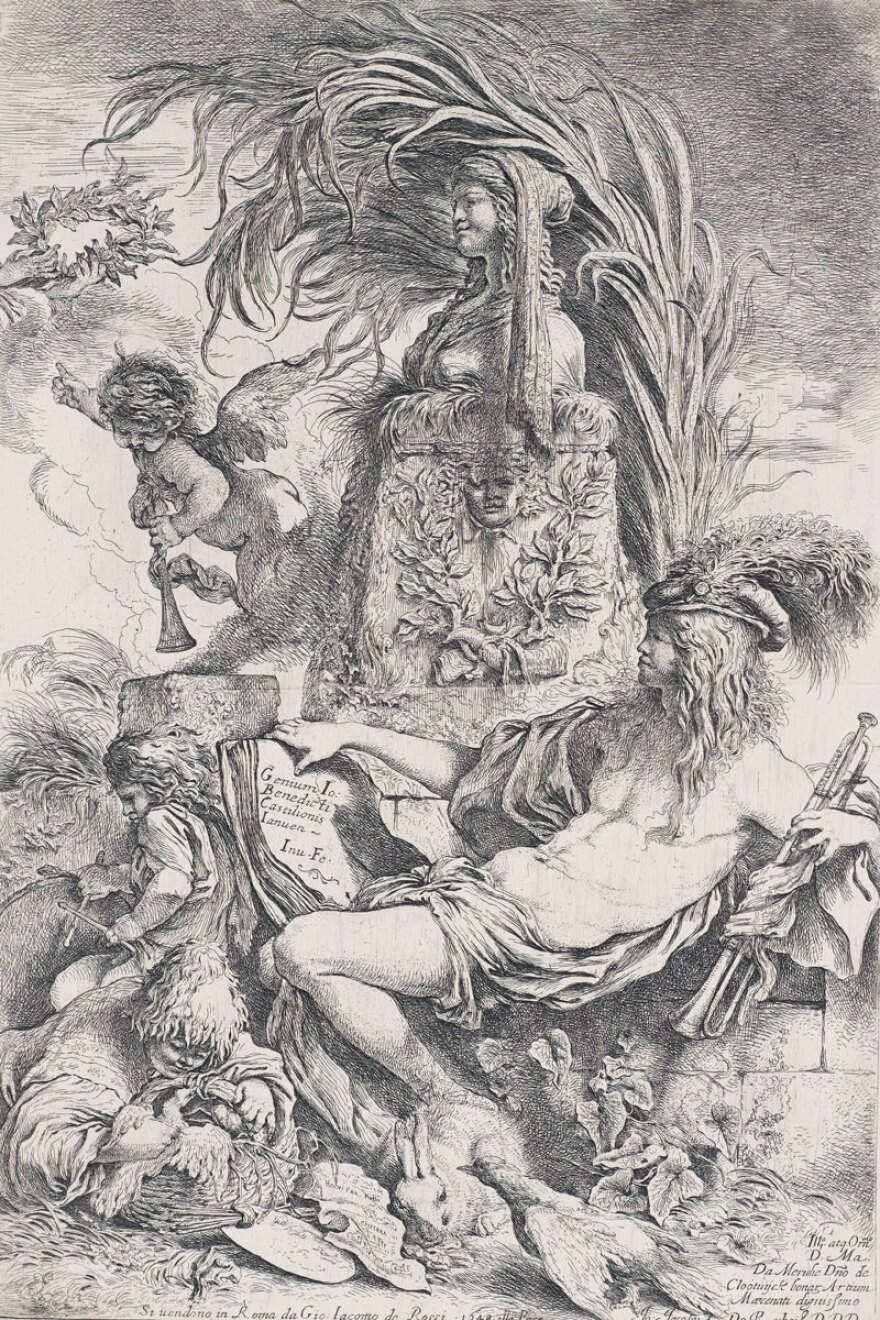Artist Giovanni Benedetto Castiglione was not a nice guy. He threatened to push his own sister off of a roof. He beat up a man over an apartment. There were even murder accusations.
"He was horrible," concurred Denver Art Museum curator Timothy Standring. "We're dealing with the Sopranos of the 17th century."
Yet, his artwork – which includes a mix of paintings, drawings and prints – is sublime, Standring said, which is why he's been researching Castiglione for the past 44 years.
"I found him to be a challenge because I don't think that in the 17th century they knew how to describe him, how what to deal with him as an artist, how to how to classify him," he said. "He was an outsider… An underdog."
Kind of like him, Standring said. In 1971, the then-University of Chicago grad student was in need of a subject and he found Castiglione. The artist blazed his own trail. He painted. He drew. He invented the monotype printmaking method.
"He was a painter and a draughtsman at the same time, so he painted and drew and blurred the definition of those precise categories," Standring said. "It was all invented and I don't think he had the patience to learn academic secure drawing such as his contemporaries."
Standring also found himself blazing his own trail.
Before being outed as a Soviet spy in 1978, Anthony Blunt was the Queen's curator. Standring met him when he traveled to England to look at the collection's Castiglione drawings.
Blunt had already written a book about Castiglione and tried to dissuade the young grad student, saying that more research would unearth nothing new.
"It just redoubled my desire to prove everybody wrong, that there was still a whole new story to be written about this artist," Standring said. "And here we have the results of that in Denver, Colorado, in this exhibition."
All these years later, Castiglione has come out of the shadows for Castiglione: Lost Genius—Masterworks on Paper from the Royal Collection, which is on display at the Denver Art Museum. The show – featuring works on loan from Her Majesty The Queen's Royal Collection – showcases all facets of the master draftsman, painter, and printmaker.

Castiglione's Dark Side
During the course of his research, Standring found a trial document that dates from 1654 to 1655. The 70 page document showed evidence of 12 prior trials involving Castiglione.
"This is where we were able to corroborate evidence that prior biographers had said that he was more feared than loved," Standring said. "Now we've got a document that actually exposes how irascible this individual really was."
Including the fact that Castiglione may have murdered someone. What gave him away? Underwear.
"Well the trial document actually says … when Senor Castiglione and his brother arrived in Genoa, we had to furnish him with pots and pans, with canvas, with the stuffing for mattresses, as well as underwear. Underwear! Underpants! 'Mutandine!'" Standring said. "So I'm in the archives reading 'mutandine' and I said 'wait a minute, you know, am I reading the right word?' So I went to the archivist and she bursts out laughing. She couldn't believe that that they were producing such intimate garments."
It was determined by his accusers that to have left in that big of a hurry, he had to have done something quite dastardly, he said adding, "You don't stick around if you're going to be accused of something as grave as that."
Whether or not Castiglione actually did kill someone, Standring could not determine, but the documents show that the artist was not someone you wanted to mess with.
One print, called The Genius of Castiglione depicts the artist sitting with a book in his lap that reads "I am a genius, Giovanni Benedetto Castiglione." The print was Castiglione's response to a theatrical skit calling him a sub-par artist.
Well, it was his second response. His first was to beat up the actor.

The work is one of Standring's favorites. It also brings a twinge of regret to him.
"I had the opportunity to buy this," he said. "Every time a print comes to my house it's wrapped up, and if I open it, I buy it. And it sat in my house for about six months, unopened, and then I finally had to send it back because I just couldn't afford it. This was about 20 years ago."
At that time – the mid-'80s – the print was priced at $5,000. And now?
"More," Standring deadpanned.
Standring said he's often asked if he sees hints of Castiglione's violent personality behind his work, but he's leery to read too much into the works, which can be decidedly dark.
"My current summation is that it was a horrible time to live," he said, especially if you were an artist and dependent on the "clientelismo" system.
"You had to go through a whole brokerage system of 'gifting,'" Standring said. "So it was a courtly society in which you wouldn't simply sell a painting to a cardinal or a prince. You'd have to go through his broker. And imagine the games that you'd have to play to get the broker's goodwill in order for the broker to pay."
Castiglione didn't play the game. In fact, he went in front of the doge - Genoa's chief magistrate - and in front of the entire court, shredded one of his own paintings with a dagger over an argument over one of his works.
"He basically flipped the bird at them and simply said, 'You're never going to have a painting ever by me ever again,'" Standring said.
It may have been partly that attitude that obscured Castiglione for so long. Outside of art historians and aficionados, he is largely unknown. That makes the Denver Art Museum exhibit even sweeter for Standring.
"The exhibition's been open for three weeks already and I've had more people come up to me saying, it was the most interesting monographic show I've seen in a long time, in which I've learned so much about his brilliance as a draftsman and that makes me smile," he said. "I'm so happy about that because you've got somebody who just kind of fell through the cracks."










